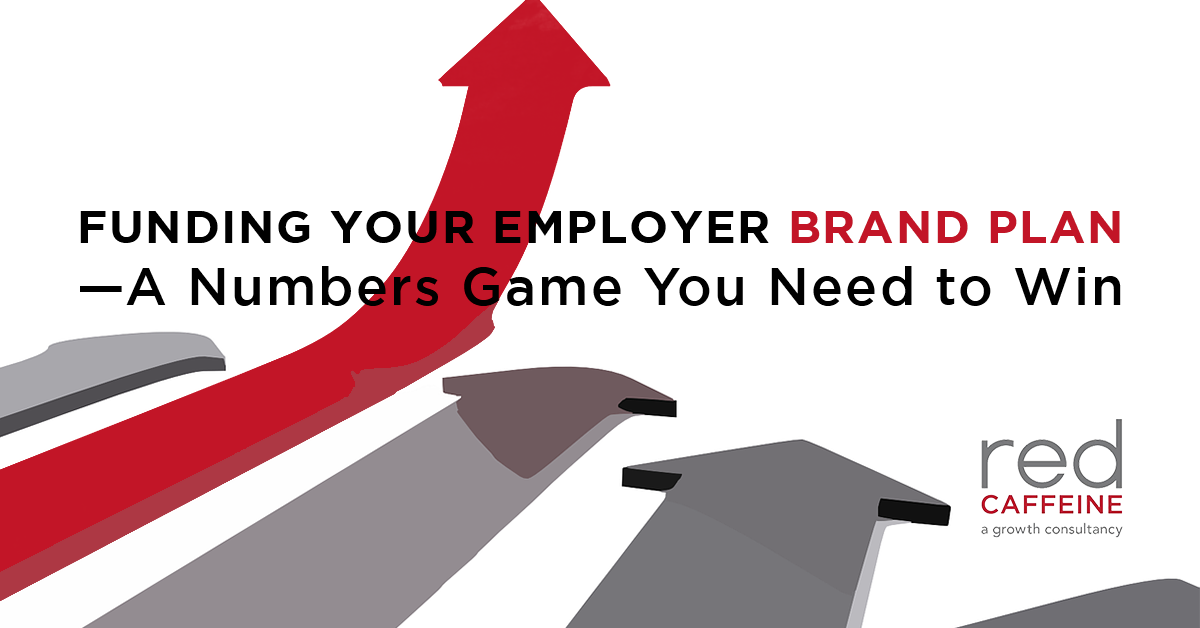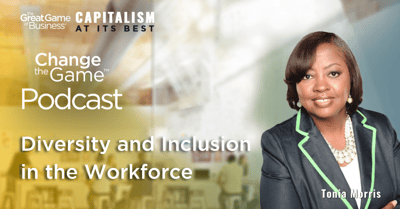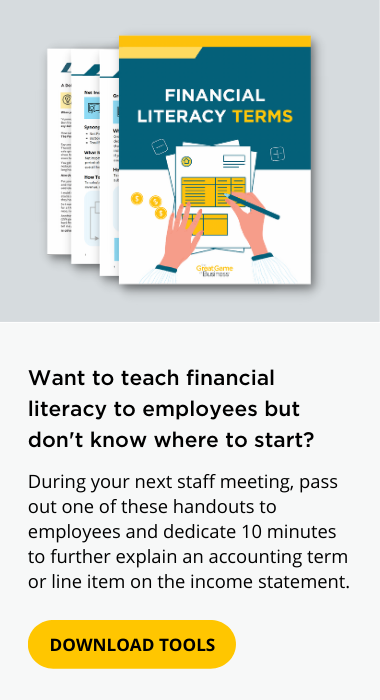
In almost every business, the cost of human capital is one of the biggest expenses, sometimes as much as 70% of a company's annual budget. Despite this fact, many organizations don't invest in an employer brand plan. Similar to lead generation campaigns that target new customers, this brand communication plan focuses on the talent audience. With unemployment continuing to trend under 4%, and companies' focus on employee recruitment and retention as we all fight in the war for talent, savvy leaders are starting to invest in employer brand strategies as part of their growth plan and competitive advantage.
Here's How to Play by the Numbers:
Establish an Employer Branding Budget
The annual CMO Survey reports that businesses allocate 6-12 percent of their gross revenue for their overall marketing spend. Low unemployment, talent shortages, and employee retention are driving the need for an increased emphasis on employer brand strategy. Companies whose growth is stagnant due to talent shortages are allocating up to 50 percent of their overall marketing spend on attracting and retaining talent.
Creating a list of critical challenges and success factors can help you prioritize your needs. You can also establish an employer branding budget based on a percentage of revenue and hiring needs. As a general rule, building a stronger talent pipeline would require a higher marketing budget than if you were struggling with employee retention and engagement.
Tell and Show Your PayBrand Story
A 2020 Compensation Best Practices Report by PayScale found that only 21% of employees believe they are paid fairly. The critical word is "believe”. Marketers know that beliefs are perceived as truth, and the only way to change perception is through compelling communications.
Great Game of Business companies share the company financials, but seldom share individuals' salary information—it's often divisive, distracting, and doesn’t help you teach people business. The challenge is that like it or not, salary data is readily accessible online. While there is an array of free data sources available, they don't always apply rigorous validation of both employee and employer information. Using a reliable data source helps you form your organization's staffing strategy and build a sustainable compensation philosophy.
 The PayBrand story combines reliable market data with your organization’s unique values to create a narrative that explains the number on the paycheck to employees and recruits. It should align with the culture you are building. Are you paying top of the market, providing a home away from home experience, but have a lean team that is expected to work very hard? Do you pay in the middle of the market and have a system that rewards individual employee performance? Is your PayBrand established as fair but working for a greater good? Rooting this story in data provides you a communication platform to educate managers and dispel confusion for recruits and employees.
The PayBrand story combines reliable market data with your organization’s unique values to create a narrative that explains the number on the paycheck to employees and recruits. It should align with the culture you are building. Are you paying top of the market, providing a home away from home experience, but have a lean team that is expected to work very hard? Do you pay in the middle of the market and have a system that rewards individual employee performance? Is your PayBrand established as fair but working for a greater good? Rooting this story in data provides you a communication platform to educate managers and dispel confusion for recruits and employees.
Showcasing your PayBrand can be an effective way to reinforce your company's dedication to fair pay. Creating visual compensation statements are an essential marketing tool in communicating the entire picture of an employee's pay package. Many employees receive 25-35 percent over their base pay through benefits and perks. The report is your opportunity to highlight value adds that go beyond salary, and many times go unmentioned in annual reviews. Highlighting your pay practices can begin even before an employee is hired. Adding your compensation philosophy to your job descriptions and career site can help you attract employees that buy into your culture and dedication to fair pay.
Validate Your Plan in Financial Terms
If you can model out the financials to show the costs of your current human capital plan and the funds needed to improve recruiting and retention, then it is possible to justify your marketing budget quantifiably. Recruiting costs, productivity loss and the cost of an open seat are all variables that have a financial impact.
According to Glassdoor and SHRM, it takes 24 to 40 days and over $4,000 to make a hire. Reducing time-to-hire and optimizing the candidate matching process with better communication tools and technology can significantly reduce recruiting costs. Creative job ads, culture videos, career websites, and candidate management software can be an asset in reducing this overall expense.
Companies routinely invest in recruiting efforts, manager and peer time, new hardware, software, and an array of internal processes to bring a new employee up to speed, yet rarely quantify how long it takes to ramp up performance and the revenue loss associated. Data varies on calculating the cost of productivity, but in some roles, it can take up to two years for a new hire to be as productive as an existing employee. Creating a scoring system that measures time to productivity can improve onboarding effectiveness and reduce productivity loss.
The top-line revenue loss due to a lack of resources can be financially crippling. This is happening more and more in a variety of sectors due to workers aging out, lack of experienced candidates, and geography. Depending on the industry, an open role can cost an organization anywhere between 1-3 times their salary. Simply multiplying the number of days a job stays open by the daily revenue produced by a single employee will give you a model to estimate the cost of an open seat.
Are you winning the numbers game with a well-established employer brand plan? If you cannot answer that question with certainty, it may be time to look at your overall strategy. Start by making a list of your staffing priorities and rating them by their financial impact. Use this information to create your budget and build an employer brand plan that optimizes your recruiting efforts, improves retention and morale, and makes people a crucial focus of your growth strategy.
Red Caffeine covered topics like this at the Annual Great Game of Business Conference in their session, What is Your PayBrand Story? Humanize Benefits & Perks to Win the War for Talent.
See results like Red Caffeine.
Other Articles You Might Like:
.png)








.png)




-5.png)

